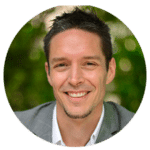Day Thirteen
DAY 13: Dr Elise Bialylew interviews Cortland Dahl
LISTEN TO INTERVIEW AUDIO ONLY BELOW
[accessally_missing_any_tag tag_id='645' comment='MLP 2020']
[/accessally_missing_any_tag]
[accessally_has_any_tag tag_id='645' comment='MLP 2020']
Mind Life Project Bonus Content:
Download your Transcript here.
[/accessally_has_any_tag]
In this video you’ll learn:
- The cutting edge science around the benefits of different types and styles of meditation
- The evidence that suggests how mindfulness can help modulate pain
- How learning to be present through mindfulness can support greater happiness
- Some practical tips for managing the common obstacles that arise along the meditation journey
- How to deal with incessant thoughts when they arise in meditation
Mindfulness of thoughts - thought labelling - 10 minutes
by Richard Chambers
*click play to listen to the meditation

Dr. Richard Chambers is a clinical psychologist and internationally recognised expert in mindfulness. He has published The Art of Mindful Origami and two previous books, Mindful Learning and Mindful Relationships. He is regularly interviewed by mainstream media and consults for a growing number of businesses, sports clubs, healthcare organisations and educational institutions. He is also one of the developers of Smiling Mind.
MANAGING OBSTACLES THAT ARISE IN MEDITATION
There are five obstacles that can commonly arise in our meditation practice (and in life!) and they were described thousands of years ago in the ancient meditation texts.
They can throw us off track creating a very unsettled mind and at worst leading us to give up entirely.
They are:
- Desire or craving and wanting
- Aversion - not wanting
- Lethargy
- Restlessness
- Doubt
We explore these obstacles in greater detail through my 6 month mindfulness program after Mindful in May here.
But to explore the first obstacle.. Desire or craving today..
Desire or craving is a force that makes this present moment feel unsatisfying. We long for things to be different to how they are right now.
This is one of the common obstacles that arises in our meditation practice, and during meditation we have the opportunity to practice observing our desire or cravings rather than acting upon them.
Today when you meditate, be aware of the different cravings or desires that come up.
These might be:
- A desire for a thought to go away
- A desire for a feeling to go away
- An urge or craving to get up and do something
- An itch
See if rather than acting upon the craving or desire, you can just sit with that feeling and observe it.
The force of craving is like a wave of energy that builds and then calms.
Through focusing our attention on the feeling of craving, rather than the object of what we crave, mindfulness becomes the surfboard that allows us to ride the wave of craving with awareness, rather than an unconscious tumble into old habits that keep us stuck.
Our cravings offer us another opportunity to put mindfulness into practice in everyday life. Try these mindful ABC's to meet your cravings with mindfulness.
In everyday life, these cravings may arise as the urge or desire to:
- Check social media
- Eat chocolate
- Drink alcohol
- Avoid being alone
Just start to become aware of what your own personal cravings are that have a hold on you, and see if you can practice mindfully observing them.
Here are four steps to managing your cravings mindfully:
A = Acknowledge that a craving is present
B = Be open and breathe Be open to the experience of craving and allow it to be exactly as it is. Avoid trying to push it away. As you feel the discomfort of an unsatisfied craving, bring your attention to your breath and use the outbreath to release any tension in your body that may be associated with the emotion.
C = Curiously explore. Bring curiosity to the physical feeling of craving. Where do you experience craving in your body? What’s the quality of the sensations associated with it? Do you feel constricted, agitated or restless?
Stay with the feeling of craving and notice how it naturally rises, peaks and falls over time. Imagine it as a wave in the ocean: building, reaching its peak, and then disappearing back into the calm water.
Through resisting the craving, you can start to break the habit loop and free yourself from automatic behaviours that are obstructing you from your deepest happiness and wellbeing.
If you are participating in the Facebook group, share what you notice after experimenting with this practice, or head over to Instagram, making sure you hashtag with #mindfulinmay so we can find your post.
stay on track
[progressally_objectives]
[progressally_progress_pie_chart size="80"]

DONATE HERE
If you'd like to make a donation and be part of this impact you can still do so right here - every $50 will bring clean water to one person for life!

Bonus Interviews
Watch Elise's conversations with four leading wellbeing experts.




